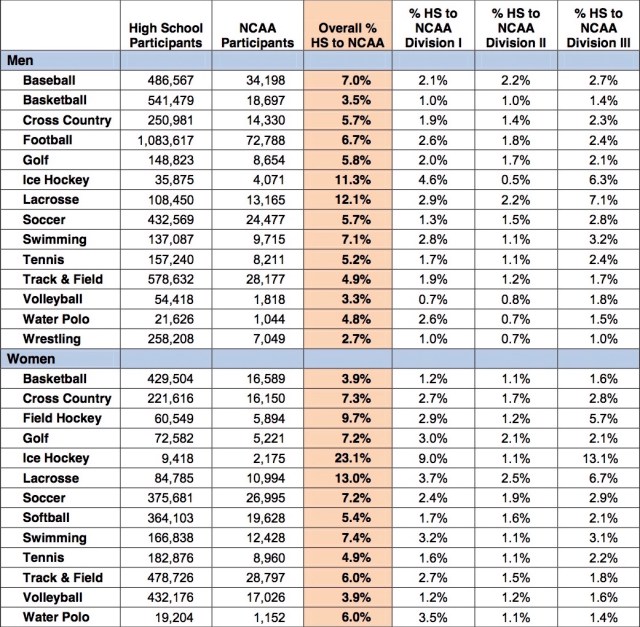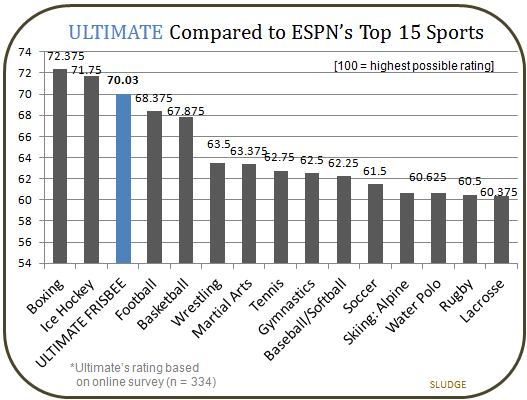Becoming a professional athlete is a dream for many. But some sports are harder to go pro in than others.
In the world of sports, competition is fierce. Athletes face countless challenges on their way to the top. From intense training to mental toughness, the journey is tough. But which sport stands out as the hardest to go pro in?
This question sparks much debate. Many factors come into play, like physical demands, skill level, and even luck. For some sports, the path is steeper and the competition tougher. Understanding these challenges can help us appreciate the dedication of professional athletes even more. So, let’s dive into the world of sports and explore what makes going pro so difficult in certain disciplines.

Credit: www.runnersathletics.com
Introduction To Pro Sports
Making it as a professional athlete is a dream for many. The world of pro sports is exciting and filled with opportunities. But the journey to get there is not easy. Many aspire to reach the top, but few actually make it.
The Allure Of Going Pro
Going pro means fame and fortune. Athletes become role models and icons. Fans cheer their names and wear their jerseys. The allure of going pro is undeniable. The excitement of competing at the highest level is a dream. The rewards are great, but the path is tough.
Challenges Faced By Athletes
Athletes face many challenges on their way to becoming pros. The physical demands are intense. They train for hours every day. Injuries are common and can end careers. The mental pressure is just as tough. The competition is fierce. Many talented players are vying for the same spot. Only the best make it through.
Support is crucial. Family and friends play a big role. Coaches and mentors guide them. But even with support, the road is hard. Many give up. But those who persist can reach their dreams.
Defining Difficulty In Sports
Not all sports are equal in difficulty. Some are more demanding. To understand which sport is the hardest to go pro in, we need to define what makes a sport difficult. This includes both physical and mental aspects. Let’s dive deeper into these factors.
Physical Demands
Physical demands are a key factor in sports difficulty. Athletes need to push their bodies to the limit. This involves strength, speed, endurance, and flexibility. Different sports require different combinations of these abilities.
| Sport | Physical Demands |
|---|---|
| Soccer | Endurance, agility, speed |
| Boxing | Strength, speed, endurance |
| Gymnastics | Flexibility, strength, coordination |
In sports like boxing, athletes take hits while maintaining stamina. In gymnastics, flexibility and precision are key. Each sport has unique physical challenges.
Mental Toughness
Mental toughness is equally important in sports. Athletes face stress, pressure, and the fear of failure. They need to stay focused and keep a positive mindset. This mental strength can make or break an athlete’s career.
- Focus: Staying concentrated during competition.
- Resilience: Bouncing back after a loss or injury.
- Confidence: Believing in one’s abilities under pressure.
Sports like tennis require intense concentration and quick decision-making. In contrast, team sports like basketball require players to trust each other and work together. Both require mental strength but in different ways.
In summary, the hardest sport to go pro in combines extreme physical demands with high mental toughness. Both factors are crucial for success.
Evaluating Popular Sports
Many athletes dream of going pro. Some sports are harder to break into than others. This section evaluates popular sports like football, basketball, and baseball. We will look at their difficulty and challenges.
Football
Football is a highly competitive sport. Many young athletes aspire to join the NFL. The path to becoming a professional football player is tough. There are thousands of high school players. Only a small percentage make it to college teams.
From college, the chances get slimmer. The NFL draft is highly selective. Only about 1.6% of college players get drafted. The physical demands are intense. Injuries are common and can end careers early. The mental toughness required is also high. Players must handle pressure and perform consistently.
Basketball
Basketball is another challenging sport. Many kids play it from a young age. To go pro, talent alone is not enough. Players must excel in high school and get noticed by college scouts. College basketball is very competitive.
The NBA draft is even more selective. Only about 1.2% of college players make it. International competition also adds to the challenge. Players must be in peak physical condition. Speed, agility, and endurance are crucial. The mental aspect is equally important. Players need strong focus and determination.
Baseball
Baseball has its own set of challenges. The sport requires a unique skill set. Hitting a fastball is one of the hardest tasks in sports. Young players often start in Little League. The journey to the Major Leagues is long.
Players usually go through minor leagues first. This can take several years. Only the best make it to Major League Baseball. Competition is fierce. Players need exceptional hand-eye coordination. They also need mental resilience. The pressure to perform is immense.

Credit: usatodayhss.com
Niche Sports And Their Challenges
Reaching the professional level in any sport is a monumental task. But some sports present unique and significant challenges. Niche sports, in particular, require a distinct blend of talent, dedication, and sometimes, just plain luck.
Ice Hockey
Ice hockey demands exceptional skill, agility, and physicality. The sport is incredibly fast-paced. Players must have quick reflexes and strong endurance. Training is intense, starting at a very young age. Many players spend years in junior leagues.
Moreover, the competition is fierce. Thousands of young athletes vie for a limited number of spots. Injury risks are also high. The physical nature of the game often leads to injuries, affecting a player’s career trajectory.
Soccer
Soccer is the world’s most popular sport. The sheer number of players trying to go pro is staggering. Young players must stand out among millions. This requires outstanding skill, vision, and physical fitness.
Scouting and exposure are crucial. Many talented players never get noticed. Playing in top youth academies or leagues can help. But it’s not a guarantee. Consistency and mental toughness are key. The path to professional soccer is long and uncertain.
Tennis
Tennis is a sport where individual talent reigns supreme. Unlike team sports, there is no one to fall back on. Players must excel in all aspects of the game. This includes physical fitness, technique, and mental strength.
The competition is global. Thousands of players compete in junior tournaments. The path to the top is grueling. Many players spend years on the circuit, battling for ranking points. Financial support is also a challenge. Tennis requires significant investment in coaching, travel, and equipment.
Training Regimens And Requirements
Becoming a professional athlete is a dream for many, but the path is tough. The training regimens and requirements for the hardest sports are intense. They demand complete dedication and a strong mindset. Let’s dive into the daily routines and long-term commitment needed to go pro.
Daily Routines
Daily routines for aspiring pro athletes are rigorous. They start early and end late. Here is a typical day:
| Time | Activity |
|---|---|
| 6:00 AM | Morning workout (Cardio and Strength) |
| 8:00 AM | Breakfast (High-protein meal) |
| 9:00 AM | Skill training session |
| 12:00 PM | Lunch (Balanced diet) |
| 1:00 PM | Rest and recovery |
| 3:00 PM | Team practice |
| 6:00 PM | Dinner (Carb and protein-rich meal) |
| 7:00 PM | Evening workout (Flexibility and endurance) |
| 9:00 PM | Review and strategy planning |
| 10:00 PM | Sleep (8 hours minimum) |
Every day’s activities are designed to build strength, enhance skills, and promote recovery. Consistency is key.
Long-term Commitment
Achieving pro status requires a long-term commitment. Athletes must dedicate years to perfect their craft. The journey includes:
- Consistent Training: Daily, weekly, and monthly training schedules.
- Nutrition: A strict diet to fuel the body.
- Mental Toughness: Coping with stress and pressure.
- Injury Management: Preventing and recovering from injuries.
- Support System: Coaches, family, and friends for motivation.
Pro athletes often start young. They spend years in junior leagues and development programs. The journey is long but rewarding for those who make it.

Credit: ultiworld.com
Success Rates And Statistics
Achieving professional status in sports is a dream for many athletes. Yet, the road to becoming a pro is tough. Understanding the success rates and statistics can provide valuable insight. This can help aspiring athletes set realistic expectations.
Odds Of Going Pro
The odds of going pro vary by sport. For example, only 1.2% of college football players make it to the NFL. In basketball, the odds are even lower. Just 1.1% of college players go pro. Baseball offers better chances. About 9.9% of college players make it to Major League Baseball.
High school athletes face even tougher odds. Less than 0.03% of high school basketball players make it to the NBA. In football, it’s around 0.08%. Baseball offers about 0.5% chance. These numbers highlight the challenge. Only a small fraction of athletes reach the professional level.
Comparative Analysis
Comparing different sports helps to understand the difficulty. Soccer has a global reach. Millions of kids dream of playing in top leagues. Yet, the success rate is very low. In Europe, less than 1% of academy players go pro. In the United States, the odds are similar.
Ice hockey shows different trends. About 11% of college players make it to the NHL. This is higher than other sports. Yet, only 0.1% of high school players achieve the same. Golf is another challenging sport. Less than 1% of amateur golfers become professional.
Overall, the statistics reveal a harsh reality. Most aspiring athletes will not go pro. The journey requires talent, hard work, and luck. Understanding these odds helps in setting realistic goals.
Case Studies Of Pro Athletes
Becoming a professional athlete is a dream for many. Yet, the journey is arduous and filled with obstacles. Understanding the path of those who have succeeded can provide inspiration and insights. Let’s explore some case studies of pro athletes who beat the odds.
Success Stories
Some athletes defy the odds and achieve greatness. Their stories inspire countless others to chase their dreams.
- Michael Jordan: Cut from his high school basketball team, Jordan worked tirelessly to improve his game. His relentless dedication paid off. He is now considered one of the greatest basketball players of all time.
- Serena Williams: Starting at a young age, Williams faced numerous challenges. Yet, her skill and determination led her to become one of the most successful tennis players ever.
- Tom Brady: Selected in the sixth round of the NFL Draft, many overlooked Brady’s potential. Through hard work, he became a seven-time Super Bowl champion.
Tales Of Perseverance
Not all journeys to professional sports are smooth. Many athletes face tremendous setbacks before achieving success.
| Athlete | Challenges | Achievements |
|---|---|---|
| Jim Abbott | Born without a right hand | Major League Baseball pitcher |
| Bethany Hamilton | Lost an arm in a shark attack | Professional surfer |
| Lance Armstrong | Overcame cancer | Seven-time Tour de France winner |
These examples highlight that the road to becoming a professional athlete is never easy. It requires grit, determination, and an unwavering commitment to the goal.
Frequently Asked Questions
What Is The Hardest Sport To Go Pro In?
The hardest sport to go pro in is often considered to be ice hockey. It requires exceptional skill, physical endurance, and years of dedicated training.
How Many Years Does It Take To Go Pro?
It typically takes over a decade of dedicated training to go pro in most sports. This includes rigorous practice and competitive experience.
What Percentage Of Athletes Go Pro?
Only about 1% of athletes who compete in high school sports go pro. This low percentage highlights the difficulty of reaching professional levels.
What Factors Make A Sport Hard To Go Pro In?
Factors include the level of competition, physical demands, and the mental resilience required. Extensive training and early specialization also play roles.
Conclusion
Choosing the hardest sport to go pro in depends on many factors. Physical demands, talent, and sheer determination play big roles. Some sports have more competition than others. Each sport has its own unique challenges. Success requires dedication and hard work.
Only the best make it to the top. Keep pushing. Keep striving. Dreams are possible with effort and commitment.



